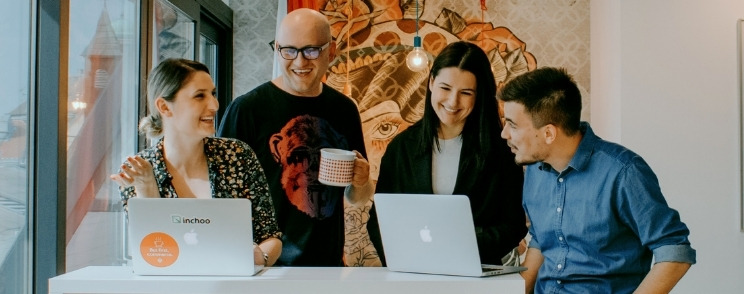There are some things all successful eCommerce websites have in common. From our 12 years of experience on the market and hundreds of eCommerce websites developed, we’ve identified 5 key elements that lead to eCommerce domination.
What is it that you need to do to build a successful eCommerce website? We suggest these 5 key elements.
- Choose the right technology
- Choose the right business model
- Impress people with your website user experience
- Impress people with your customer service
- Invest in marketing
Overview of 5 key elements of successful eCommerce
First of all, you have to build a technologically advanced platform to support a growing e-Commerce business.
You already know this if you’re doing serious e-Commerce business, operating multiple stores, selling and shipping internationally, and attracting high visitor volumes to your online store.
You simply must have a system in place that can accommodate these demands.
This is no place for experiments because even a short period of site instability can result in a major revenue loss.
When it comes to your business model, you should focus your strategy on the services or products you do best. Then serve your target audience with custom-developed website features.
Good user experience will get you repeat customers. User experience goes much further than website design. It is deep research as to how users currently use your website and finding ways how this can be optimized.
Always be finding ways to protect and benefit the customer. Your website can provide some excellent tools to do just that and secure return customers.
Finally, there are thousands of online stores on the internet. The only way to get to customers is to advertise. Do yourself a favour and don’t event think of succeeding if you can’t invest the necessary time, knowledge and money in marketing.
To illustrate all this, we’ve chosen an example company most people will know.
The One Unexpected Company That Mastered the eCommerce Game
For everyone in the e-Commerce business, there is so much to learn from one of the most successful online stores in history – the world-famous Booking.com.
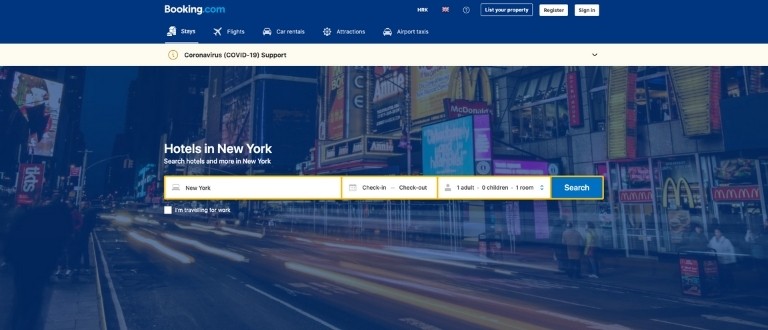
If you never thought of Booking.com as an online store, think again. Its inventory is comprised of room nights, but everything else is exactly the same as with any online store.
Travel industry is feeling devastating effects from the pandemic, but pre-Covid Booking.com was truly a disruptor in the world of e-Commerce.
And just how successful Booking.com was before the pandemic?
You know Google, the company that holds the majority of the world’s online demand for products and services? According to CNBC, for years now Booking.com is one of Google’s largest single customers in the world. Imagine that!
Booking.com has done a tremendous job in different areas of e-Commerce to become the global market leader in its category.
Let’s see how your e-Commerce store can follow the same principles to better convert and to grow.
Here are the 5 areas in which Booking.com has truly mastered the game and provides valuable lessons.
1. Technology – Lay the proper groundwork
This is what Booking.com did to have a reliable website:
- they built the core in Perl, a versatile and stable programming language
- they hired hundreds of developers
Good thing is that you don’t have to hire a massive IT department like they did to pull it off.
You can choose an open source eCommerce platform that can do just about anything. Most famous is definitely Magento.
“Open source” means that a whole community of developers participates in its development. It’s like having an army of developers working for your online store.
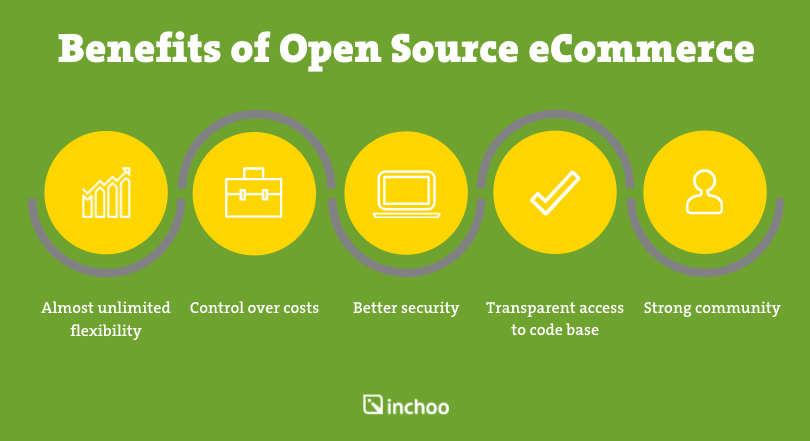
Even the biggest of brands turn to open source solutions like Magento. Coca Cola’s Cokestore.com is a perfect example.
With an open source platform, there is no end to customizations you can do. Plus you always have the possibility to change partners if you’re unhappy with the current level of support from your eCommerce agency.
2. Business Model – Focus, focus, focus…
Back when their main competitors Expedia and Priceline were selling everything from hotel rooms to airline tickets and car rental, Booking.com opted for a different model. They decided to focus only on accommodation.
By focusing on the one service they do best, they managed to completely dominate this category and become the global market leader.
If you’re also trying to serve several target audiences, make sure you’re not wasting your efforts on hard-to-reach customers or unprofitable channels.
A great example of a focused business model is a client of ours shop4runners. This German retailer sells shoes, nutrition, backpacks and a whole lot of other inventory related to all kinds of sports, but their focus is on running.
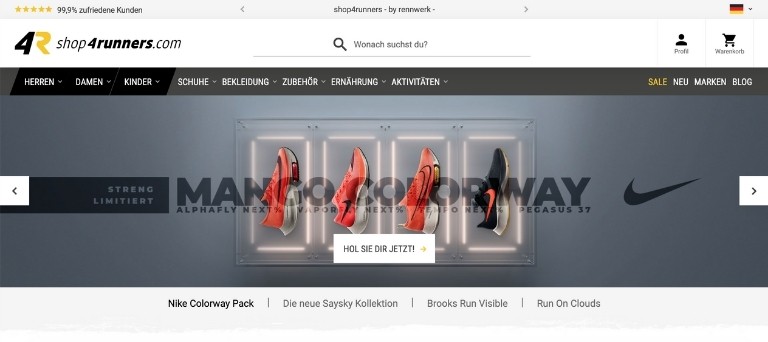
For them we’ve developed the Shoe Advisor and other features that make shoe recommendations based on users’ running preferences.
Another good example is Europa Parts, a US-based car parts dealer that focuses only on premium European car brand owners. Their website has advanced filtering that enables European car owners to easily find the parts compatible with their specific car models.
3. User Experience – It’s The Details That Make The Difference
From its very beginnings, Booking.com was characterized by a clean, airy design and great usability – it takes just a few clicks to make a reservation. It was also an early adopter of some widespread tactics today, like:
- user-generated content
- prominently displayed reviews (social proof)
- persuasive messaging (like “Only 2 rooms left” or “Last booked today by a guest from Norway”)
Does your online store deliver a multitude of reasons for your users to buy from you? If you’re unsure about this and you feel you have more potential, good idea might be to do a UX audit.
For example, one area where you can really shine is the on-site search. Two online stores might look pretty much the same, but the process through which a customer finds and buys the desired product can be worlds apart. There are different search engines on the market and expert UX designers will be able to guide you to the best solution for your store.
4. Customer service – Go out of your way to impress
Have you ever talked to hotel managers that work with Booking.com? You might be surprised to hear that they have some bad things to say.
Why is that?
True, hotels get a large percentage of their guests through Booking.com. However, whenever there are issues between the hotel and the guest, Booking.com pretty much always protects the guest. Yes, even when it’s the guest’s fault.
It is because Booking.com realizes that guests are the main source of revenue for both them and the hotel. Customers are the foundation the entire system rests upon. I’m sure you realize this goes for every B2C business.
Responsiveness on social media and other communication channels will not earn you a medal in customer service these days. But there are other areas in which you can impress your customers and turn them into brand advocates. The 2 biggest potentials are your return policy and your shipping methods.
Returns are mostly an unpleasant experience for both the merchant and the customer. Consider giving as generous a timeframe for returns as possible. Also consider developing a custom returns interface on your website that would make it easier to manage the process for all sides involved.
Shipping on the other hand has the added importance of it being a factor that influences the total price of the order. It should come as no surprise that customers prefer free shipping to discounts.
It’s funny how our brain is less impressed with a promise of 10-15% discount than with free shipping, although the shipping cost is mostly just a fraction of the average order value.
Another way to exclude the shipping cost from the order value is to enable the click-and-collect method, which shouldn’t be too challenging to organize for most businesses.
5. Invest in Marketing
We’ve mentioned earlier how Booking.com is historically one of Google’s biggest customers. This part of their strategy was vital in their climb to the top. By focusing on search ads, they managed to achieve the high ROI that fueled their growth for years.
Think of it this way – there are thousands of online stores on the internet. The only way to get to customers is to advertise. Simple rule of thumb is to use social media for demand generation and brand awareness, and search for sales activation.
Instead of insourcing, consider hiring an agency for your eCommerce PPC management.
Another smart marketing investment Booking did was translations. You don’t have to have 44 languages like they do, but have in mind – if it wasn’t profitable, they wouldn’t be doing it.
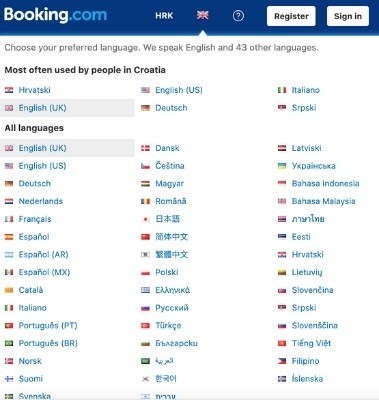
Did you know that around 12 languages cover about 80% of the world’s population? Is your website multi-language? If not, consider expanding to a language and market most natural to your business model.
These details may not seem much when viewed separately, but ultimately it’s these little things that give your online store an advantage over a competitor who simply didn’t bother.
If you want to discuss your eCommerce website with our team of experts, we can offer you a free consult – simply write to us at web@inchoo.net or fill in this contact form, and you’ll receive the quickest possible reply.
